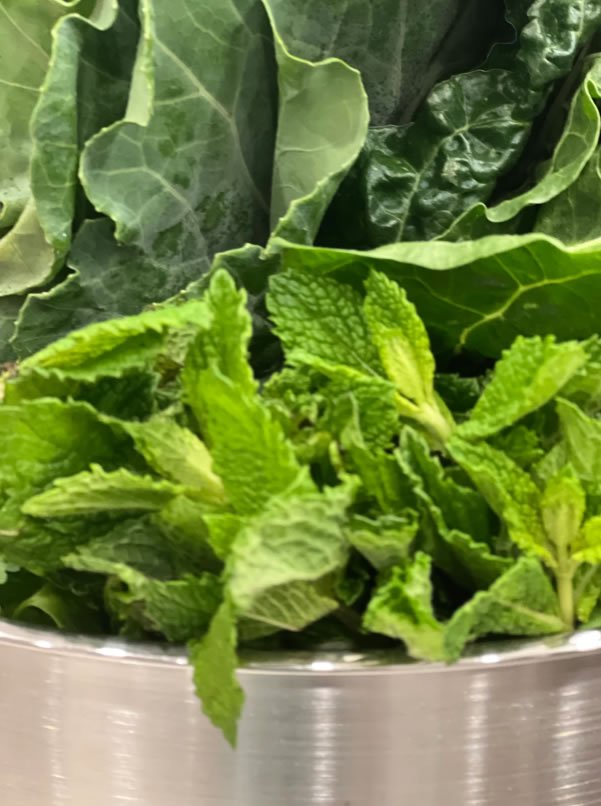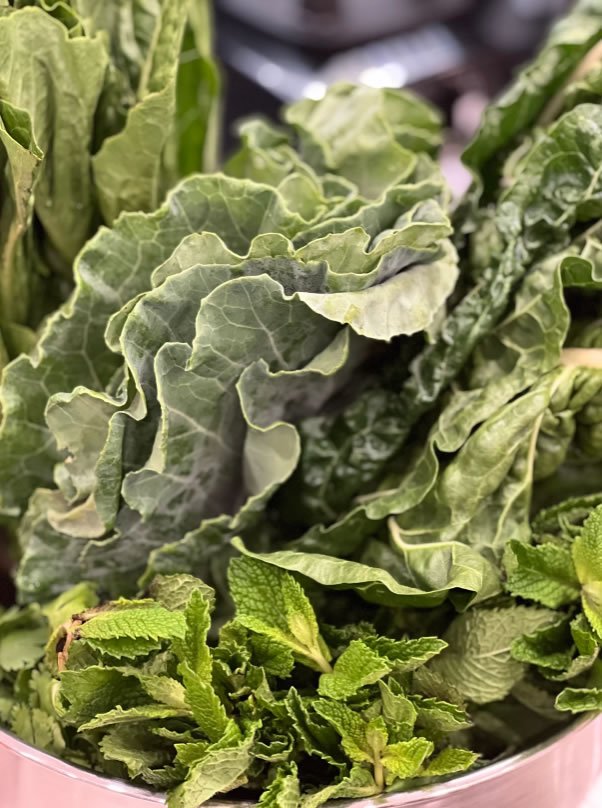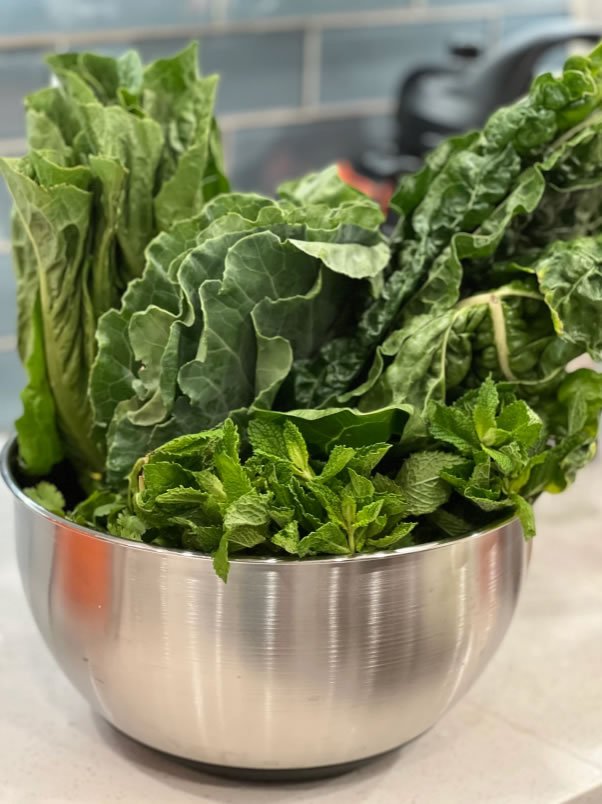To green or not to green? That’s the question
I hope Shakespeare is not too offended by me.
I often like to talk about leafy greens and veggies because they are nutritionally (super) important but frequently a forgotten item in the typical American diet. I see the occasional broccoli served with a steak on occasion on people’s plates but usually left aside as the non-flavorful item that was not even desired in the first place.
Green collards, mint, swiss chard.
As with any food, it’s important to remember that you prepare your greens is as crucial in the attempt to have them on your daily menu. Veggies boiled in water are far from ideal and will turn anybody away from eating them.
How about nutrients? Why are greens so good for you?
These whole foods provide fiber, iron, magnesium, calcium, folate (a great source of folate, especially when consumed raw), vitamins that are antioxidants, and also the so-called phytochemicals (Simopoulos, 1999). Phyto comes from Greek, and it means plant. If we break down the word phytochemical, it simply means chemicals produced by plants.
Phytochemicals make up more than eight thousand compounds (Gropper et al., 2018). These phytochemicals are bioactive and play a role in the body’s pathways.
One angle we can explore is that flavonoids à are plant pigments that function as antioxidants in the body. There is something called an oxygen radical absorbance capacity or simply ORAC, which measures the antioxidant capacity of any given food present within the body (Murray et al., 2005). The higher this capacity is, the better off you are when consuming these foods. Flavonoids are anti-inflammatory, antiallergenic, antiviral, and anticancer. Flavonoids are available in herbs, teas, fruits, vegetables, spices, and nuts (Gropper et al., 2018). There’s a great informational piece on flavonoid content in vegetables available here.

Mint leaves are a great addition to salads and veggie rolls
The beauty of flavonoids, for instance, is that evidence suggests that they are cardioprotective, antioxidant, and anti-inflammatory. They also promote vasodilation (which allows the body’s vasculature to relax). Additionally, flavonoids also provide anticoagulant effects and anti-platelet adhesion (Gropper et al., 2018).
So what are the key factors when incorporating more greens into your diet?
They can be a great addition to smoothies.
Be creative with healthy sauces when eating your greens in salads; you can make an avocado dressing or an oil-free tahini dressing with garlic and water. These dressings with add flavor and nutrients to your meal.
You can make lentil soup and add spinach or kale to it. It tastes delicious! Add your greens to stews, sautee them in water, and mix them with other veggies.
Start with one or two types of leafy greens. Develop an acquired taste slowly. Baby steps are always better than trying to conquer the world in one day. It takes time for your taste buds to adjust to new flavors and textures. Be patient, don’t feel guilt, and work at your own pace.
Unsure what to buy? Use color as a guide. There are multiple shades of green to explore in the supermarket aisle.

Beautiful, organic, fresh greens
The texture is crucial! Raw veggies don’t taste the same as steamed ones. Steam them or bake them to change it up. I don’t like my vegetables boiled in water, so steaming is a great way to cook your green vegetables. Remember not to overdo the steaming. A little crunch is always good!
Make homemade rolls or green tacos. You can fill your rolls and tacos with many ingredients; mushrooms are a great, nutritious option.
Organic is better if that’s something that financially makes sense to you. Remember, eating healthy is an investment!
Try to always experiment in the kitchen! It makes it more fun, and it helps to incorporate diverse ingredients into your plate!
References:
Gropper, S. A. S., Smith, J. L., & Carr, T. P. (2018). Advanced nutrition and human metabolism (7th ed.).
Murray, M., Pizzorno, L., & Pizzorno, J. (2005). The Encyclopedia of Healing Foods. Atria Books.
Simopoulos, A. P. (1999). The Omega Diet. HarperPerennial.


Leave a reply